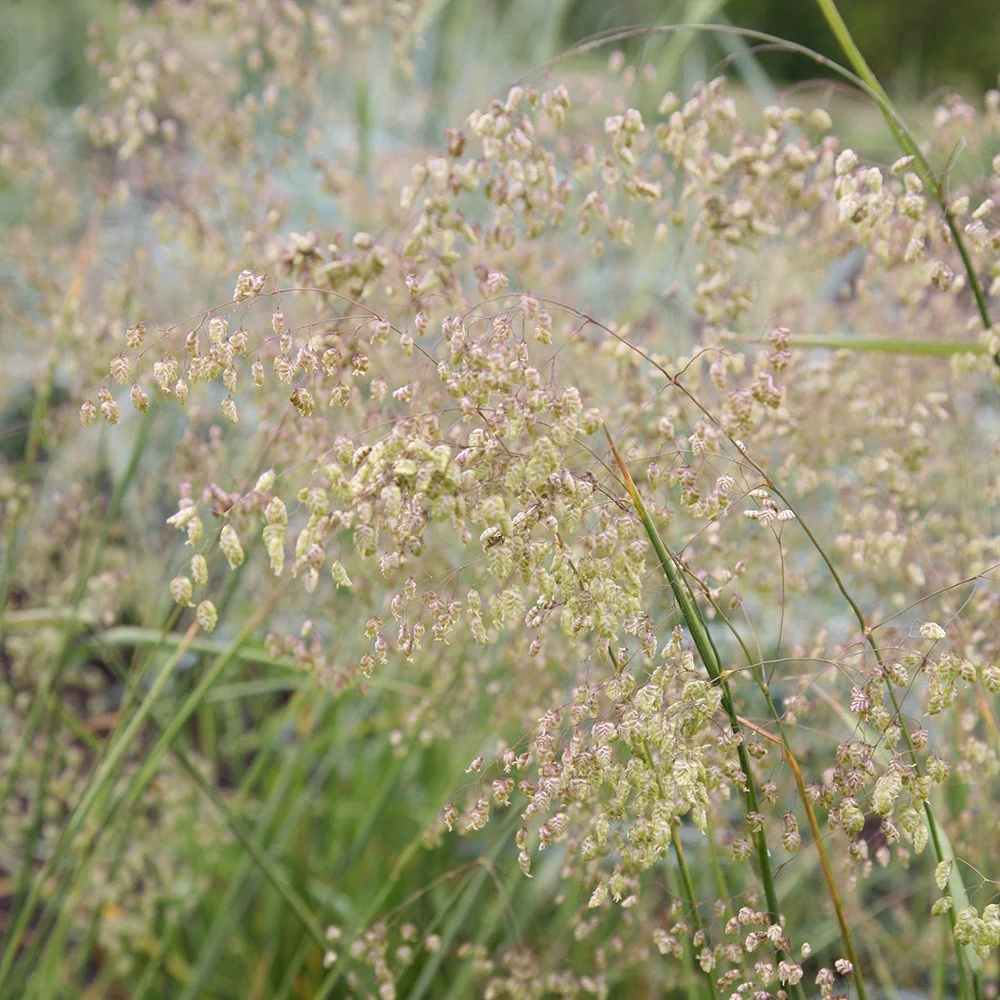Recently James was invited to be a guest blogger for the charity Gardening With Disabilities Trust which is an organisation passionate about helping people with disabilities get into gardening. Based in Kent, this charity is ran entirely by volunteers and have so far awarded over 38,000 grants.
James’ guest blog is all about grasses, the best uses for them and where I gained my love from them!
Who doesn’t love an ornamental grass? Well, if you had asked me this when I first started designing I would say me! I am not sure on why I didn’t like ornamental grasses, maybe due to lack of knowledge about the plants and how to use them in a planting scheme. It wasn’t until I visited the tranquil Knoll Gardens located in Dorset circa 2018.
After my visit to the gardens that were established in 1994, it completely changed the way that I saw grasses and how they can be incorporated into the planting scheme. I learned that grasses can be blended with perennials which in turns adds drama, texture, movement and structure the garden. This is all achieved by carefully thinking about where you are planting the grasses and how to affectively get the most out of them.
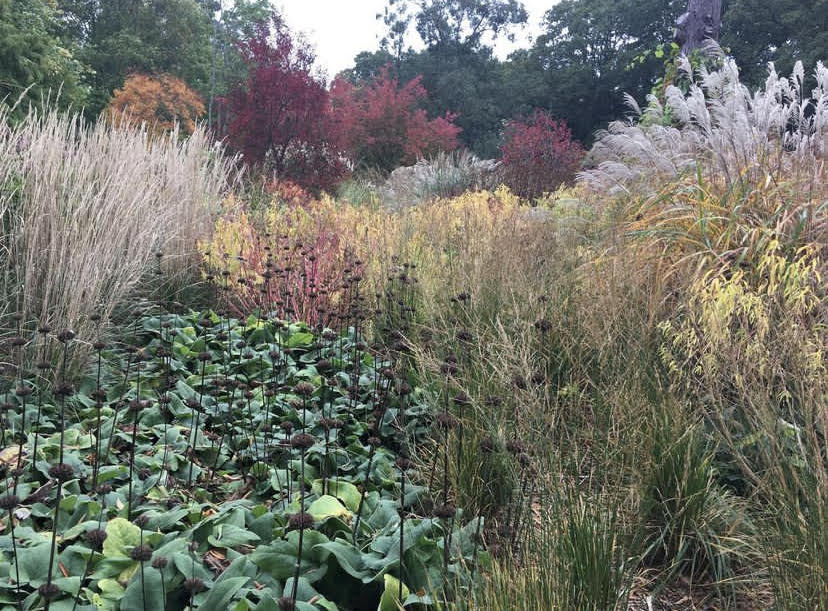
Planting them where you are going to get a slight movement from the breeze as well as near paths as this is the best way to hear the sound that they create. Another way that grasses and be utilised is by planting them in accordance with the suns orientation. I think there is nothing better than the dappled shade created by the taller grasses. Grasses are also greatly used as underplanting for multi stems, and standard trees, by using grasses such as Hakonechloa macra or Stipa tenuissima, will help highlight, and ensure that the tree is framed perfectly.
Grasses are typically low maintenance, some will need cutting back once a year and others may need a simple comb through with your hand!
Now to give you a hand in choosing some grasses, below is a list, in no particular order of my favourite grasses and what I like to combine them with;
1) Hakonechloa macra
As mentioned previously in this blog, Hakonechloa macra is a fantastic plant to underplant trees with and for hogging path edges. This low maintenance deciduous perennial, produces luscious mounds of green leaves and airy green flowers in late summer. If you give this plant a chance, as it is rather slow growing, then it is an impressive sight when planted in large groups. Cut back the old flowering stems and any dead foliage in late winter. I love to partner this plant with structure shrubs such as Pittosporum tobira ‘Nanum’.
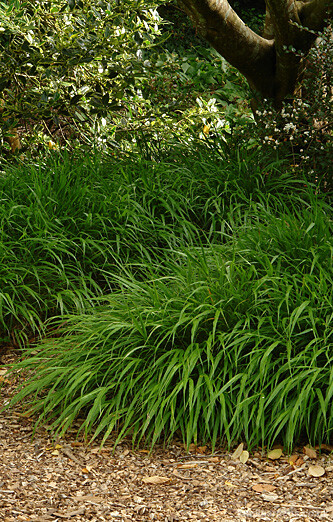
2) Stipa tenuissima / Nassella tenuissima
Recently changing it’s name to Nasella tenuissima, just to annoy everyone! Now, I love Stipa in all varieties, I used it in my RHS Flower Show Tatton Park and the majority of my designs, when given the right context. The Stipa, or Mexican Feather Grass as it is commonly known is an evergreen grass that is brilliantly utilised in a large border to create soft movement. If necessary, just back dying strands in early spring. I like to get the best out of this plant by planting it along side Verbena bonariensis or Salvia ‘Hot Lips’
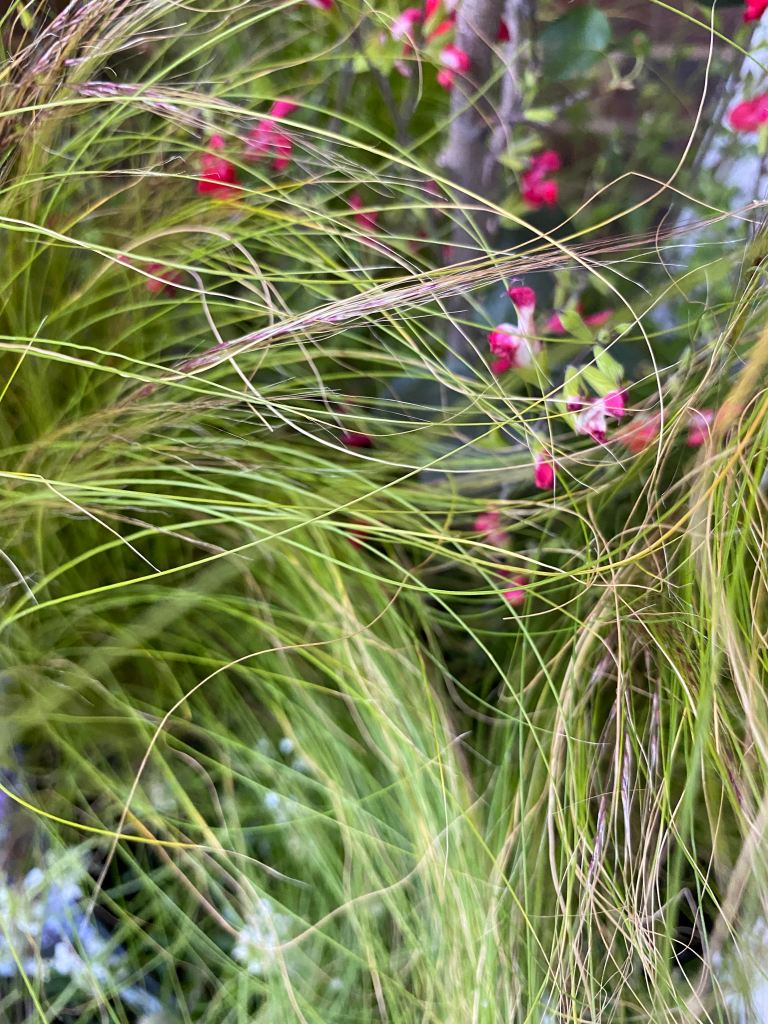
3) Pennisetum alopecuroides
The Chinese Fountain Grass grows in dense clumps of 60cm long leaves which in winter turn brown. This plant flowers green / purple which are faintly hairy in late summer and early autumn and looks brilliant in a coastal planting scheme as well as being planted en-masse. All you have to do with this plant is to prune it back and remove dead or old flowering stems in spring. I combine this plant with late flowering perennials such as an Aster.
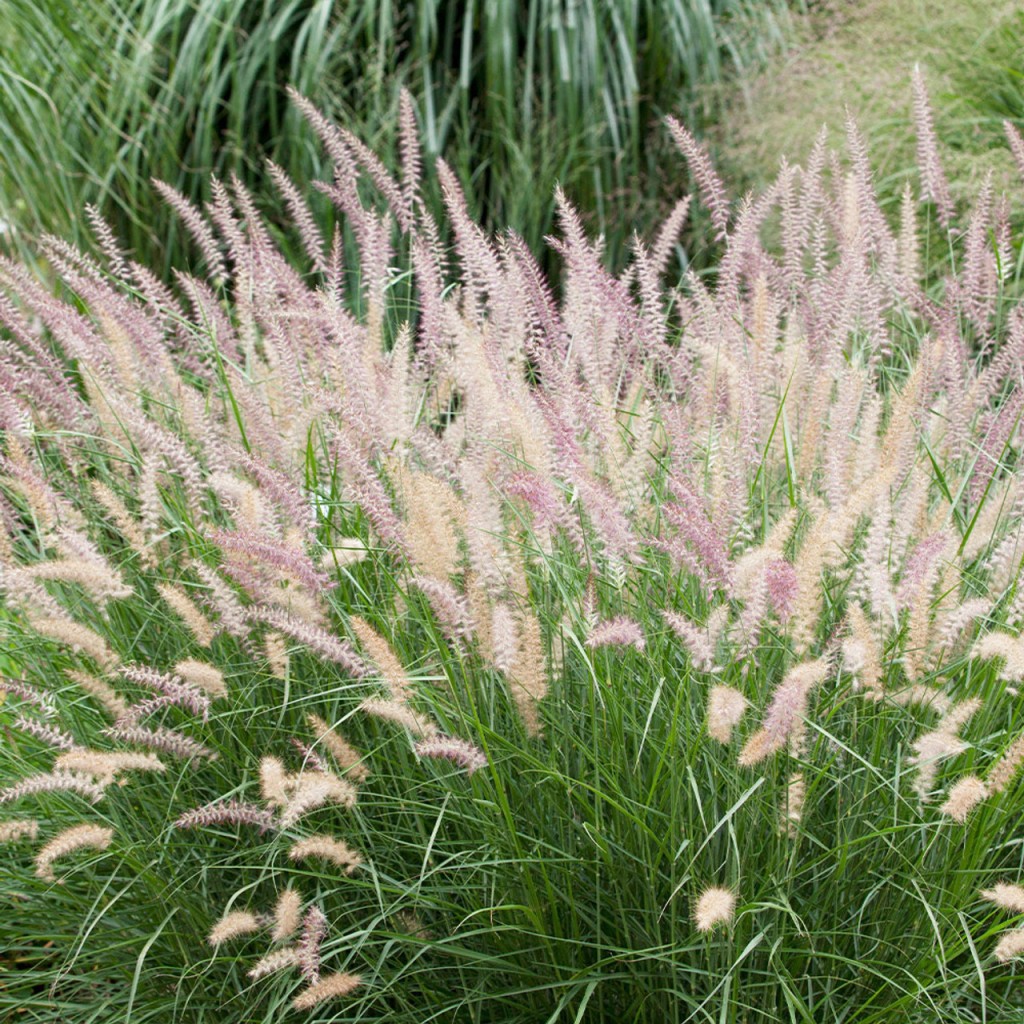
3) Calamagrostis x acutiflora ‘Karl Foerster’
Reaching a potential height of 1.5m, this grass is a robust perennial specimen that brilliantly works well when combined with Verbena bonariensis or Agapanthus. This is such an amazing plant if you want the dappled shade affect in your garden as well as providing stature and movement. To get more out of the Feather Reed Grass you can divide it mid spring and make sure that you cut back to around 6-10 inches from the ground in very early spring before any new growth resumes.
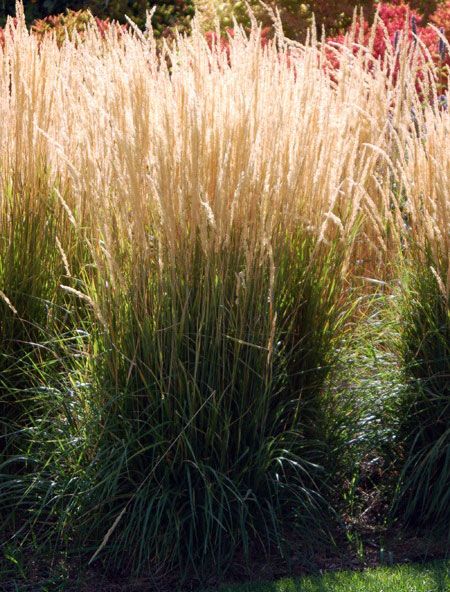
4) Lagurus ovatus
The Hare’s Tail Grass or Bunnies’ Tails is an annual grass grows in small tufts, usually at a maximum height of 0.5m with dense fluffs of flower heads. The flower heads are especially useful if you are in to drying flowers. Being from the Mediterranean this grass loves to be in a warm and sunny location and I personally love to see it in courtyard gardens and in containers. Unlike the other grasses mentioned, the Lagurus ovatus doesn’t need to be pruned. Despite the height difference, I have planted this with a Verbena bonariensis on my balcony, but I think they do balance each other out. Another plant that works extremely well is the Sanguisorba officinalis. The red and white flowers of both plants makes each other stand out.
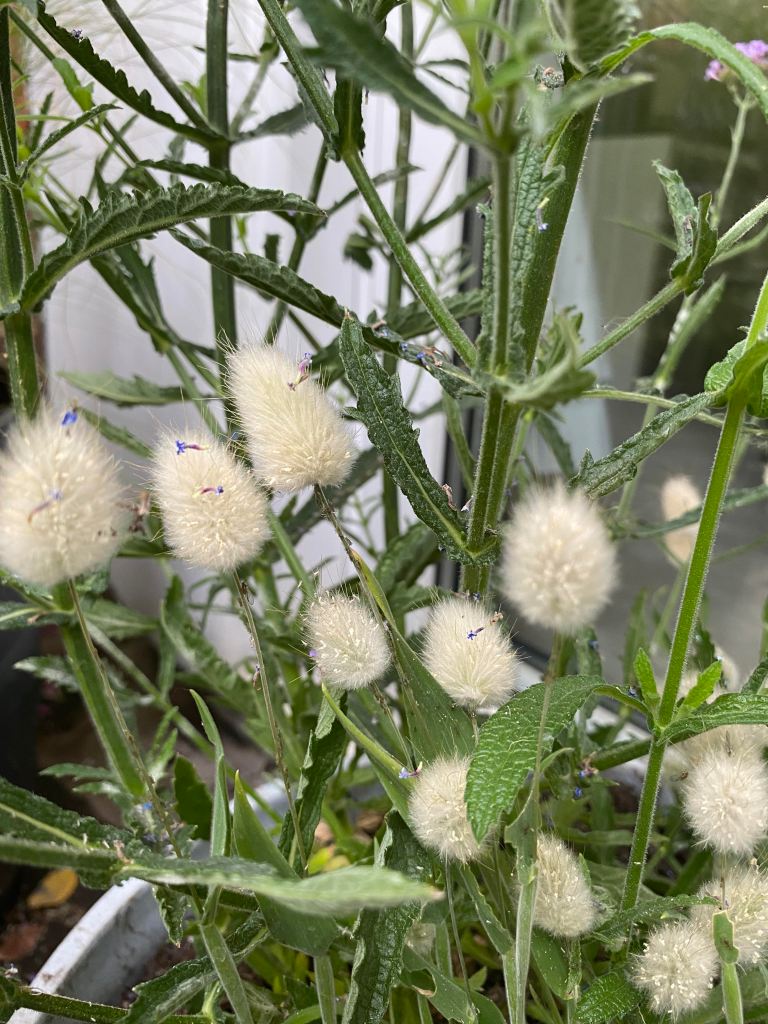
5) Briza media
Finally, a native grass, the Quaking Grass, is a short living, semi evergreen perennial that grows in sunny or partial shade and up to 1m in height. Flowering in Spring and Summer, this grass possess heart shaped purple and green tinted flowerheads that over time turn to a buff like colour. This also makes it brilliant for dried flower arranging. I recommend pruning the flower heads back in the late summer to encourage new growth. I love to see this grass companioned with Achillea millefolium or Leucanthemum x superbum.
